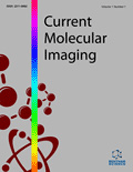Abstract
Background: Limited data are available in the literature comparing brain SPECT, PET and volumetric MRI in the same cohort of patients with Alzheimer’s disease.
Objectives: The main goal was to show a correlation between two different functional imaging substrates, as determined by FDG-PET and SPECT, with structural MRI findings as defined by voxel-based volumetric measurements (VBM), in the same cohort of patients with AD.
Methods: 20 patients (9 male) with confirmed clinical diagnosis of Alzheimer’s disease (AD) and mild dementia according to NINCDS/ADRDA and DSM-III-R criteria were selected to be included in the present study. Twenty normal elderly volunteers constituted the Control Group. The two groups were paired for age, sex and educational level (p>0.05). The same clinical protocol was applied in patients and controls. Brain SPECT, PET and MR were performed with an interval among them shorter than 4 weeks.
Results: Reduced brain glucose metabolism (MRglc) by PET occurred predominantly in the posterior cingulum and precuneus, followed by bilateral posterior parietal, lower temporal and frontal cortices (p<0.001). Similar findings were shown on SPECT, albeit with lesser statistical significance compared to FDG-PET (Z score of 3.89 vs. 5.32). SPECT depicted subtle blood flow reduction in mesial temporal lobes on SPM, a finding not reproduced by PET. MRI showed significant atrophy in hippocampus and superior temporal cortex, bilaterally, but not in the posterior cingulate gyrus, parietal or frontal lobes.
Conclusion: A not perfect correlation was seen among the findings seen on SPECT, PET and MRI in the same cohort of patients with AD, suggesting that structural and functional methods reveal distinct substrates of the disease.
Keywords: Alzheimer's disease, dementia, FDG, PET, SPECT, volumetric MRI.
 32
32

